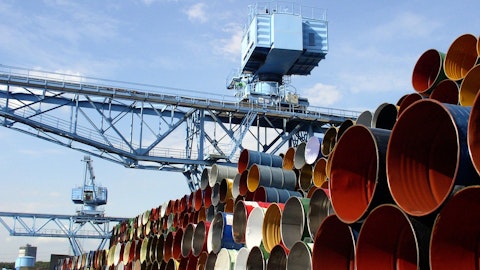Page 14 of 49 – SEC Filing Additionally, management frequently highlights growth in average unit volumes, but fails to acknowledge that this growth has been accompanied by an increase in per unit construction and pre-opening costs from $840K in 2003 to $2.6M in 2015, leading to a significant decline in the returns on invested capital. We perceive that the pursuit of higher average unit volumes (management’s barometer for “growth”) has led the Company to deploy ever-greater amounts of capital into larger units tailored to more populous, but also more competitive, and more expensive markets. Similarly, remodel costs for the current Stadia program are increasing over prior remodel budgets, and the Company has not articulated the basic return on investment methodology that illustrates why the new remodels are attractive, why the current remodel cost is appropriate, or if similar outcomes could be achieved at a lower cost. Might shareholders and customers alike be better off if capital were instead invested into smaller-format units that, at the expense of lower AUV’s, could profitably succeed in smaller, less competitive markets with lower construction and operating costs, producing higher returns on capital? Management appears to believe that realizing its identity as a “growth” company means delivering EPS growth of 15% or greater. However, even this statement is made without any design as to how that will be achieved. Beneath the headline, there is no calculus as to how same-store sales, operating margin expansion, franchise vs. company unit growth, franchisee acquisitions, and share repurchases will combine to produce such a result. Just how this earnings goal is achieved, and in particular how much capital is required to achieve it, will dictate the multiple of EPS at which the shares will trade. This is the vital and missing link between earnings creation and shareholder value creation. The apparent lack of sensitivity to this connection is the primary impediment to shareholders earning an attractive return on their investment in the future. Unfortunately for shareholders, the easiest growth to come by has been the kind that is BOUGHT, requiring the most capital and offering the lowest returns. As same-store sales have decelerated and the law of large numbers has made it difficult for new unit additions to sustain historical revenue growth rates, management has turned to buying in franchisees in its pursuit of “growth.” The large franchisee acquisitions in 2015 were telegraphed to investors, under the pretense of being “opportunistic,” as helping the Company achieve its goal of growing sales and net income. At the same time, the Company did not offer any concrete rationale for why this transaction would create more shareholder value than allowing the units instead to be sold to a third party buyer – an outcome that would have retained the existing high-value franchise royalty stream and avoided a major capital outlay at an excessive and unprecedented multiple, and moreover would have avoided the additional cost and distractions of transaction fees, remodel requirements, regional G&A investments, integration risks, and operational complexity. Despite the Company’s refusal to disclose key financial metrics of the transaction, it is clear to us that the acquisitions of 2015 were mistakes and would not be approved today if an appropriate methodology were employed. This acquisitive behavior is almost certainly reinforced by an incentive compensation system, designed by the Board, that rewards (if not preconditions) management for maximizing absolute growth in revenue dollars, net income dollars, and store openings – all metrics that fail to acknowledge the capital required to achieve these outcomes and whether the returns on that capital investment are appropriate. In contrast, most other high-performing restaurant companies emphasize metrics more explicitly tied to shareholder value, including operating income (not sales),
Follow Buffalo Wild Wings Inc (NASDAQ:BWLD)
Follow Buffalo Wild Wings Inc (NASDAQ:BWLD)
Receive real-time insider trading and news alerts





